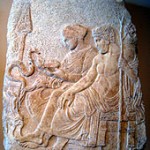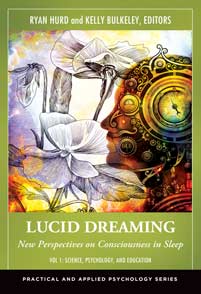 The latest issue of the journal Consciousness and Cognition has an article of mine titled “Digital dream analysis: A revised method,” that’s the fruition of several years of data-driven work. It lays out the latest developments in testing and refining the word search template programmed into the Sleep and Dream Database, a digital archive and search engine designed to promote scientific dream research. The original article I wrote using this word search method was in a 2009 issue of Consciousness and Cognition, titled “Seeking patterns in dream content: A systematic approach to word searches.” The new article builds on that earlier piece and extends it in two ways.
The latest issue of the journal Consciousness and Cognition has an article of mine titled “Digital dream analysis: A revised method,” that’s the fruition of several years of data-driven work. It lays out the latest developments in testing and refining the word search template programmed into the Sleep and Dream Database, a digital archive and search engine designed to promote scientific dream research. The original article I wrote using this word search method was in a 2009 issue of Consciousness and Cognition, titled “Seeking patterns in dream content: A systematic approach to word searches.” The new article builds on that earlier piece and extends it in two ways.
First, it presents a revised, 2.0 version of the word search template that has many improvements on the 1.0 version presented in the 2009 article. I’m sure there will be more refinements in the future, and hopefully more researchers developing their own templates as well. But for now, the 2.0 version is useful as a well-tested and fairly comprehensive tool for analyzing dream content simply, quickly, and reliably.
Second, the article applies the 2.0 word search template to a number of previously studied collections of dreams from very high quality sources (Calvin Hall and Robert Van de Castle, J. Allan Hobson, and G. William Domhoff). In doing so I followed the advice of Kurt Bollacker, database engineer for the SDDb, who suggested I take “classic” studies in dream research from the past and try applying my new method to their same data. That’s what I have done in this article: use the word search method to analyze the same sets of dreams those researchers studied, so we can see what the new method can and cannot tell us about meaningful patterns in dream content.
Here is the abstract for the article. The whole thing, I’m told, is available for free download until November 22, 2014.
“This article demonstrates the use of a digital word search method designed to provide greater accuracy, objectivity, and speed in the study of dreams. A revised template of 40 word search categories, built into the website of the Sleep and Dream Database (SDDb), is applied to four “classic” sets of dreams: The male and female “Norm” dreams of Hall and Van de Castle (1966), the “Engine Man” dreams discussed by Hobson (1988), and the “Barb Sanders Baseline 250” dreams examined by Domhoff (2003). A word search analysis of these original dream reports shows that a digital approach can accurately identify many of the same distinctive patterns of content found by previous investigators using much more laborious and time-consuming methods. The results of this study emphasize the compatibility of word search technologies with traditional approaches to dream content analysis.”


